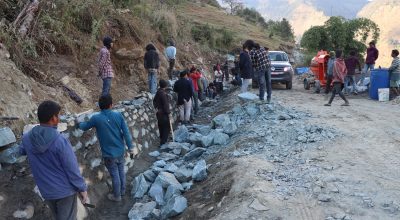
The phenomenon where young, energetic, and often well-educated individuals leave their home country for better opportunities abroad, is a growing concern in our nation. This trend poses a significant threat to the economic stability and future prospects of the countries left behind. Where thousands of youth migrate daily in search of better opportunities, is a prime example of this worrying trend. The consequences of such mass outmigration are profound, as seen in my poor country. Specially from the most South Asian countries and Nepal is the top in the list. Here we find that in Nepalese youth it is 1st is to go abroad.
The Economic Implications of Youth Outmigration
Young people are often viewed as the foundation of a country and backbone of country’s economy. They sustain the elderly population, stimulate innovation, and add to the labor force. It is difficult to make up the slit produced by an important portion of this group of people migrating. Reductions in the workforce have the direct effect of decreasing economic growth slowdown of economic activities and lack of muscles leads to dwindle of production. But far more frightening are the long-term consequences. A notable outcome is the “brain drain,” which refers to the outflow of highly skilled and capable laborers from the nation.
As a result, there is a scarcity of experts in vital sectors which includes technology, healthcare, and education. The lack of skilled workers makes it more difficult for the nation to operate it daily activities and unskilled and unable manpower leads to low quality work. Furthermore, the prospect of economic expansion has been reduced by the loss of human capital.
The Case of Nepal: A Looming Crisis
Nepal is currently highly affected by youth outmigration. We see crowd of young people In Tribhuvan International airport where thousands of young Nepalis leave the country every day, primarily seeking employment in abroad and to study. Especially European Craze is seen in abundance.
While remittances sent back home by these migrants play a crucial role in the Nepali economy, the long-term effects of this mass exodus are worrisome. Nevertheless, remittance saved our country of being in the situation like Sir-lanka. Outmigration of youth in Nepal is creating a labor shortage in key sectors such as agriculture, manufacturing, and services. This shortage is driving up wages, which, while beneficial in the short term for workers, can lead to increased production costs and reduced competitiveness in the global market. Additionally, the reliance on remittances makes the economy vulnerable to external shocks, such as changes in the global labor market or economic downturns in the host countries.
Moreover, the social fabric of Nepal is being affected. The absence of young people is leading to the breakdown of traditional community structures. Elderly parents are often left behind without adequate support. It’s likely to happen that in few years Nepal would be country full of old age people.
The Path Forward: Retaining and Empowering Youth
In order to minimize the negative impacts of youth migration, nations such as Nepal must prioritize the retention of its youthful residents by the provision of domestic possibilities. This necessitates a large investment in infrastructure, employment development, education, Healthcare, Sports and Arts. A country can reduce its need for migration and use its youth’s potential to propel economic growth by creating an environment where they can flourish. Policies that promote return migration can also aid in reversing the brain drain. By giving incentives like tax cuts, loan the availability, and job opportunities, they could entice highly skilled migrants to go home, thereby gaining their unique knowledge and expertise. In summary, young outmigration is a risky trend that compromises the stability of economies in nations like Nepal. #Nepal
















